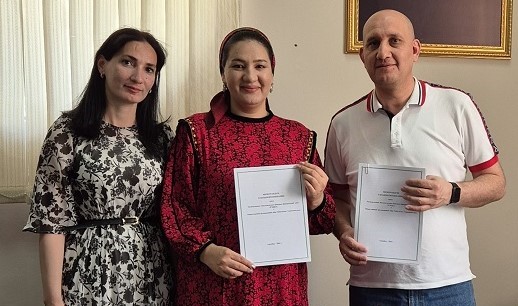On January 4, President Shavkat Mirziyoyev was briefed on the presentation of proposals aimed at improving the efficiency of water use in agriculture.
The need for rational and careful use of water is particularly emphasised in the current conditions of an increasingly acute shortage of water resources in our country. In recent years, 472,000 hectares and 48,000 hectares respectively have been converted to drip and sprinkler irrigation. Water-saving technologies have been implemented on 97,000 hectares of land. Laser levelling was carried out on 649,000 hectares.
These measures have saved 2 billion cubic metres of water in 2023 alone. This is equivalent to the annual water consumption of the Bukhara region.
Scaling up this work is hampered by a number of local problems. For example, the authority of district irrigation departments is limited by inter-farm canals. Water supply services are not very effectively financed. Loans from commercial banks for the implementation of water-saving technologies are not attractive to farmers.
In this context, on the instructions of the Head of State, proposals have been developed to improve the lower level of the water resources management system and to increase the efficiency of its use.
It is planned to organize state institutions “Suv yetkazib berish xizmatlari” based on district irrigation departments and specialized services. They will be equipped with excavators and other equipment, which will halve the cost of maintaining irrigation networks.
There are also plans to make an inventory of all irrigation networks, allocate them to owners and develop a uniform identification number.
From this year, the payment for 1 cubic metre of water delivered to the fields will be set at 100 Uzbek soums. It is time to change the stereotype in the minds of many people that water is free, it was noted at the meeting.
To this end, it is proposed to calculate payments with water users on a differentiated basis. In particular, from 2025, farmers who have installed water meters and used water-saving technologies will be subject to a decreasing coefficient of taxation, while those who have not will be subject to an increasing coefficient. At the same time, the charge for water supply services will be abolished.
Measures to further promote the use of water-saving technologies were also discussed.
It was noted that a preferential credit line will be opened for this purpose. In particular, loans will be provided at an interest rate of 14% for a period of 5 years with a two-year grace period. For projects in the Republic of Karakalpakstan and the Khorezm region, the interest rate will be 10%. Farmers will not be required to provide collateral for these loans.
At the same time, the possibility of obtaining loans online is being considered. Agrobank, for example, has developed the Suvkredit.uz system. Additional obligations are imposed on contractors, such as the construction of water-saving technologies based solely on a functioning project, a guarantee of at least two years for the installed systems, and maintenance for at least five years. Contractors who do not meet these requirements will not be included in the scheme.
Today, a subsidy of 8 million Uzbek soums is provided for each hectare where water-saving systems are installed. So far, 50% of this amount has been paid in the year the technology is installed, and the rest in the following year. This condition will also be simplified by paying the full subsidy in the same year as the technology is installed.
The Head of State approved these proposals and gave instructions for the proper establishment of the system, covering every end user and expanding the scope of water-saving work.
https://president.uz/en/lists/view/6959



